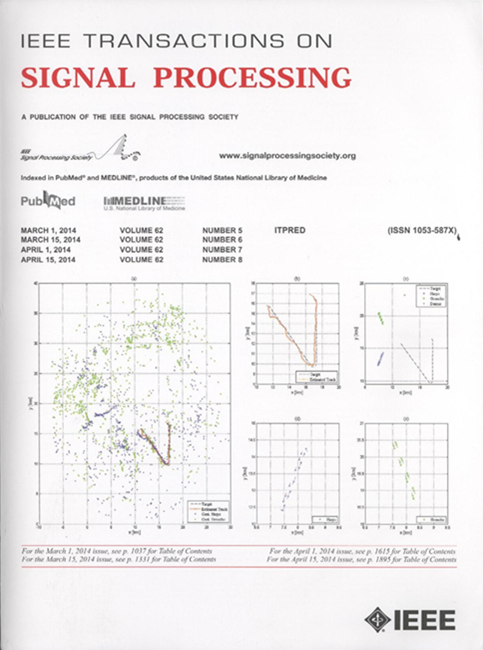Distributionally Robust Adaptive Beamforming
IF 5.8
2区 工程技术
Q1 ENGINEERING, ELECTRICAL & ELECTRONIC
引用次数: 0
Abstract
As a fundamental technique in array signal processing, beamforming plays a crucial role in amplifying signals of interest (SoI) while mitigating interference plus noise (IPN). When uncertainties exist in the signal model or the data size of snapshots is limited, the performance of beamformers significantly degrades. In this article, we comprehensively study the conceptual system, theoretical analysis, and algorithmic design for robust beamforming against uncertainties in the assumed snapshot or IPN covariances. Since such robustness is specific to the probabilistic uncertainties of snapshots or IPN signals, it is referred to as distributional robustness. Particularly, four technical approaches for distributionally robust beamforming are proposed, including locally distributionally robust beamforming, globally distributionally robust beamforming, regularized beamforming, and Bayesian-nonparametric beamforming. In addition, we investigate the equivalence among the four technical approaches and suggest a unified distributionally robust beamforming framework. Moreover, we show that the resolution of power spectra estimation using distributionally robust beamforming can be greatly refined by incorporating the characteristics of subspace methods, and hence, the accuracy of IPN covariance reconstruction can be improved, especially when the interferers are close to the SoI. As a result, the robustness of beamformers based on IPN covariance estimation can be further enhanced.分布鲁棒自适应波束形成
波束形成技术作为阵列信号处理的一项基本技术,在放大感兴趣信号(SoI)和抑制干扰加噪声(IPN)方面起着至关重要的作用。当信号模型中存在不确定性或快照数据大小有限时,波束形成器的性能会显著下降。在本文中,我们全面研究了针对假设快照或IPN协方差中的不确定性的鲁棒波束形成的概念系统,理论分析和算法设计。由于这种鲁棒性是针对快照或IPN信号的概率不确定性的,因此称为分布鲁棒性。特别提出了四种分布鲁棒波束形成技术,包括局部分布鲁棒波束形成、全局分布鲁棒波束形成、正则化波束形成和贝叶斯非参数波束形成。此外,我们还研究了四种技术方法之间的等效性,并提出了统一的分布鲁棒波束形成框架。此外,我们还表明,通过结合子空间方法的特点,分布鲁棒波束形成可以大大提高功率谱估计的分辨率,从而提高IPN协方差重建的精度,特别是当干扰靠近SoI时。从而进一步提高了基于IPN协方差估计的波束形成器的鲁棒性。
本文章由计算机程序翻译,如有差异,请以英文原文为准。
求助全文
约1分钟内获得全文
求助全文
来源期刊

IEEE Transactions on Signal Processing
工程技术-工程:电子与电气
CiteScore
11.20
自引率
9.30%
发文量
310
审稿时长
3.0 months
期刊介绍:
The IEEE Transactions on Signal Processing covers novel theory, algorithms, performance analyses and applications of techniques for the processing, understanding, learning, retrieval, mining, and extraction of information from signals. The term “signal” includes, among others, audio, video, speech, image, communication, geophysical, sonar, radar, medical and musical signals. Examples of topics of interest include, but are not limited to, information processing and the theory and application of filtering, coding, transmitting, estimating, detecting, analyzing, recognizing, synthesizing, recording, and reproducing signals.
 求助内容:
求助内容: 应助结果提醒方式:
应助结果提醒方式:


